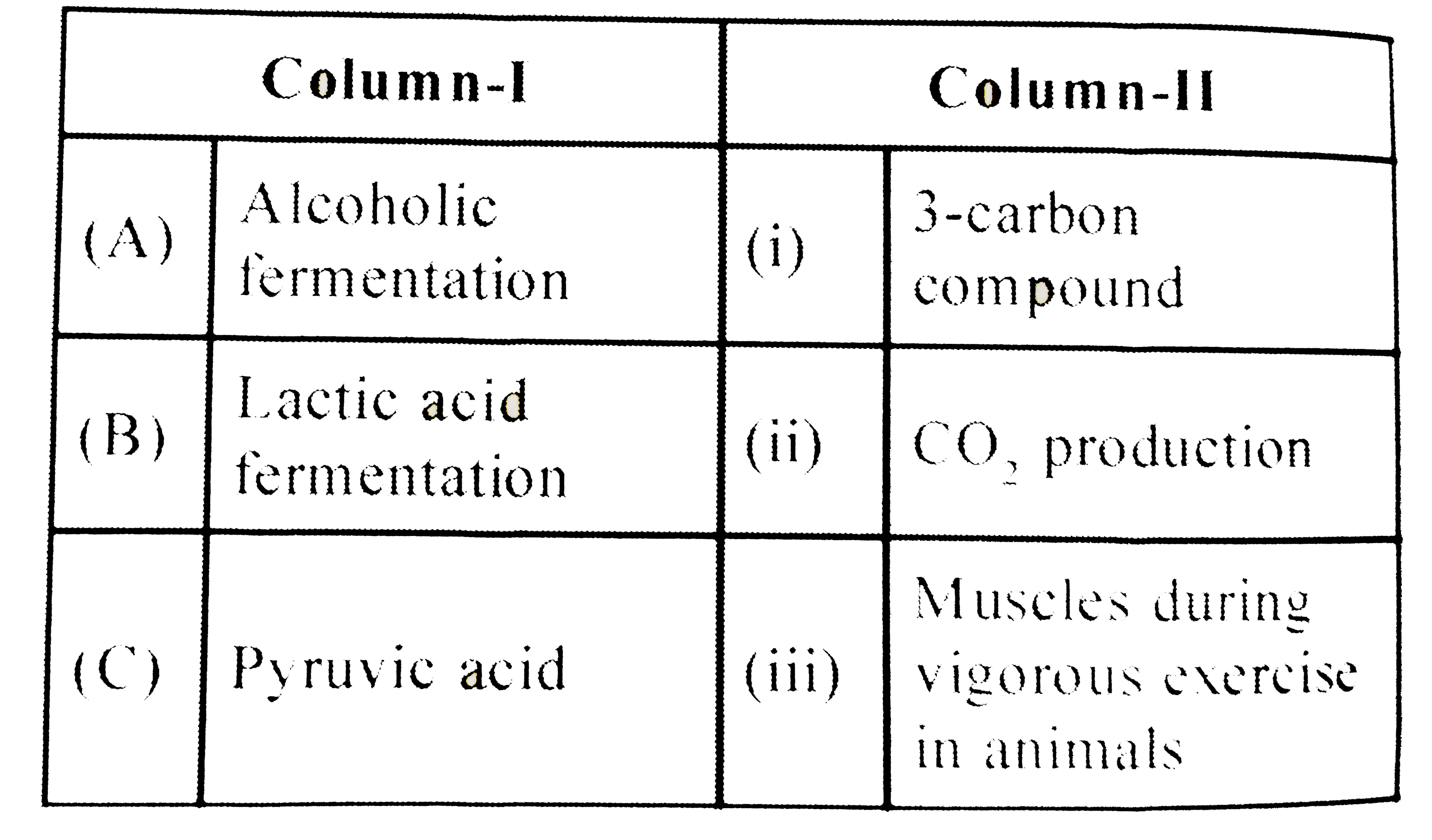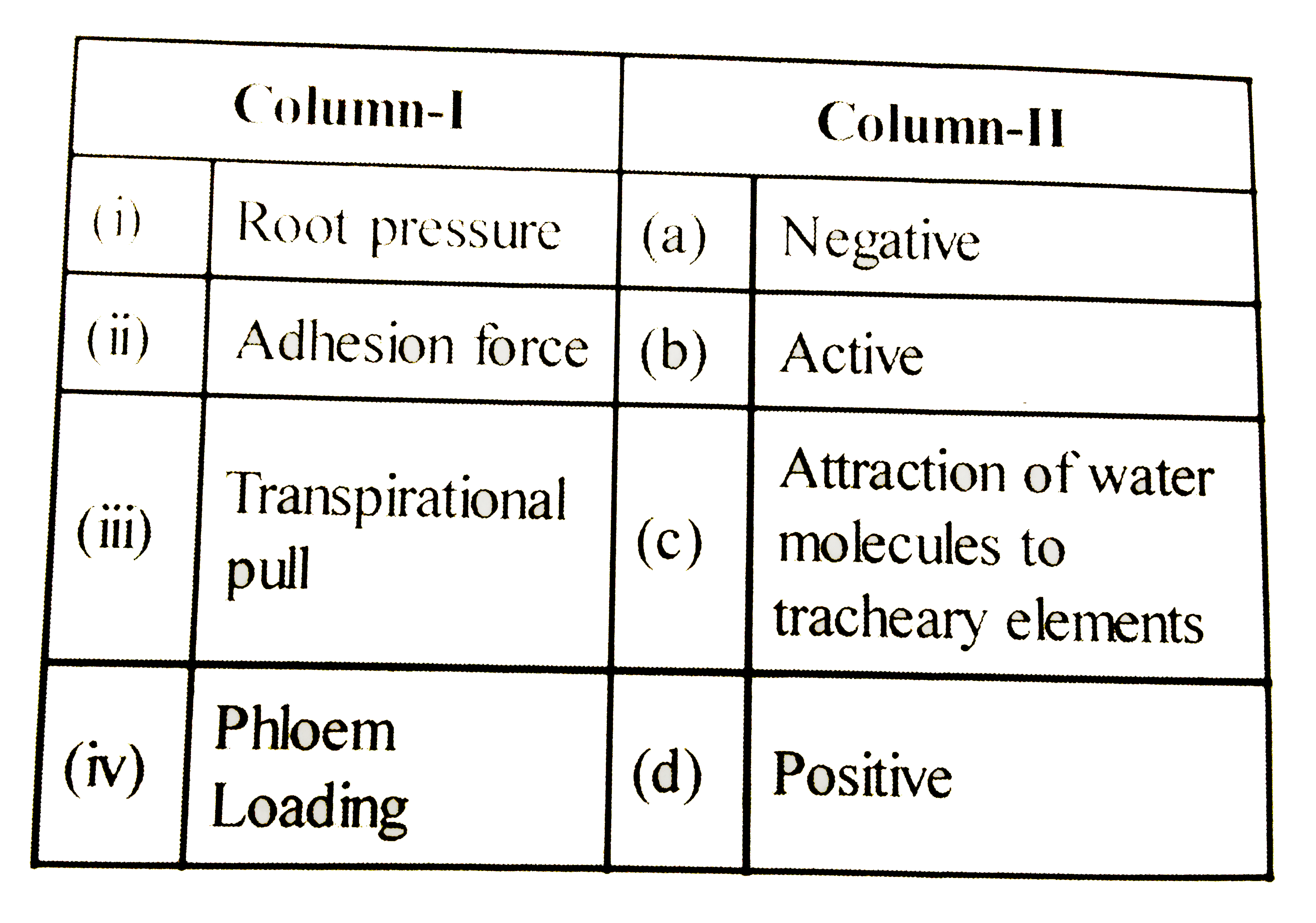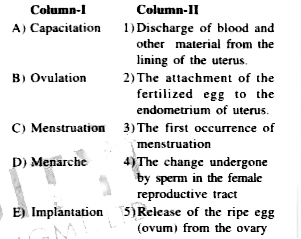match the following columns and select the correct option Column-I Column-II (a) Gregarious, polyphagous pest (i) Asterias (b) Adult with radial symmetry and larva with bilateral symmetry (ii) Scorpion (c) Book lungs (iii) Ctenoplana (d) Bioluminescence (iv) Locusta
a(ii), b(iii), c(iv), d(i)
a(iii), b(iv), c(ii), d(i)
a(iii), b(ii), c(iv), d(i)
a(iv), b(i), c(ii), d(iii)
The correct Answer is:B
To solve the matching question, we will analyze each item in Column-I and find the corresponding item in Column-II.
1. Identify the first item in Column-I:
- (a) Gregarious, polyphagous pest: This refers to a pest that is social (gregarious) and feeds on many different types of food (polyphagous). The correct match is (iv) Locusta, which is the scientific name for the locust, a well-known gregarious and polyphagous pest.
2. Identify the second item in Column-I:
- (b) Adult with radial symmetry and larva with bilateral symmetry: This characteristic is typical of organisms in the phylum Echinodermata, such as starfish. The correct match is (i) Asterias, which is the scientific name for the starfish.
3. Identify the third item in Column-I:
- (c) Book lungs: Book lungs are respiratory structures found in certain arachnids. The correct match is (ii) Scorpion, as scorpions possess book lungs for respiration.
4. Identify the fourth item in Column-I:
- (d) Bioluminescence: This is the ability of certain organisms to produce light. The correct match is (iii) Ctenoplana, which is known for its bioluminescent properties.
Final Matching:
- (a) Gregarious, polyphagous pest → (iv) Locusta
- (b) Adult with radial symmetry and larva with bilateral symmetry → (i) Asterias
- (c) Book lungs → (ii) Scorpion
- (d) Bioluminescence → (iii) Ctenoplana
Conclusion:
The correct matches are:
- (a) → (iv)
- (b) → (i)
- (c) → (ii)
- (d) → (iii)
The correct option is Option 4.
- (a) Gregarious, polyphagous pest: This refers to a pest that is social (gregarious) and feeds on many different types of food (polyphagous). The correct match is (iv) Locusta, which is the scientific name for the locust, a well-known gregarious and polyphagous pest.
- (b) Adult with radial symmetry and larva with bilateral symmetry: This characteristic is typical of organisms in the phylum Echinodermata, such as starfish. The correct match is (i) Asterias, which is the scientific name for the starfish.
- (c) Book lungs: Book lungs are respiratory structures found in certain arachnids. The correct match is (ii) Scorpion, as scorpions possess book lungs for respiration.
- (d) Bioluminescence: This is the ability of certain organisms to produce light. The correct match is (iii) Ctenoplana, which is known for its bioluminescent properties.
- (a) Gregarious, polyphagous pest → (iv) Locusta
- (b) Adult with radial symmetry and larva with bilateral symmetry → (i) Asterias
- (c) Book lungs → (ii) Scorpion
- (d) Bioluminescence → (iii) Ctenoplana
The correct matches are:
- (a) → (iv)
- (b) → (i)
- (c) → (ii)
- (d) → (iii)
Topper's Solved these Questions
Similar Questions
Match the column I with column II and select the correct option

View SolutionMatch column-I with column-II and select the correct option
a Gregarious, polyphagous pest i Asterias
b Adult with radial symmetry and larva with bilateral symmetry ii Scorpion
c Book lungs iii Ctenoplana
d Bioluminescence iv Locusta
View SolutionMatch column I with column II and select the correct option.

View SolutionMatch column I with column II and select the correct option.

View SolutionMatch the column-I with column-II and select the correct option :

View SolutionMatch the column-I with column -II and select the correct option :

View SolutionMatch the column I,II,and III .Select the correct option :

View SolutionMatch column -I with column-II and select the correct option :-

View SolutionMatch the terms column-I with column-II and select the correct option

View SolutionMatch the terms column-I with column-II and select the correct option

View Solution
